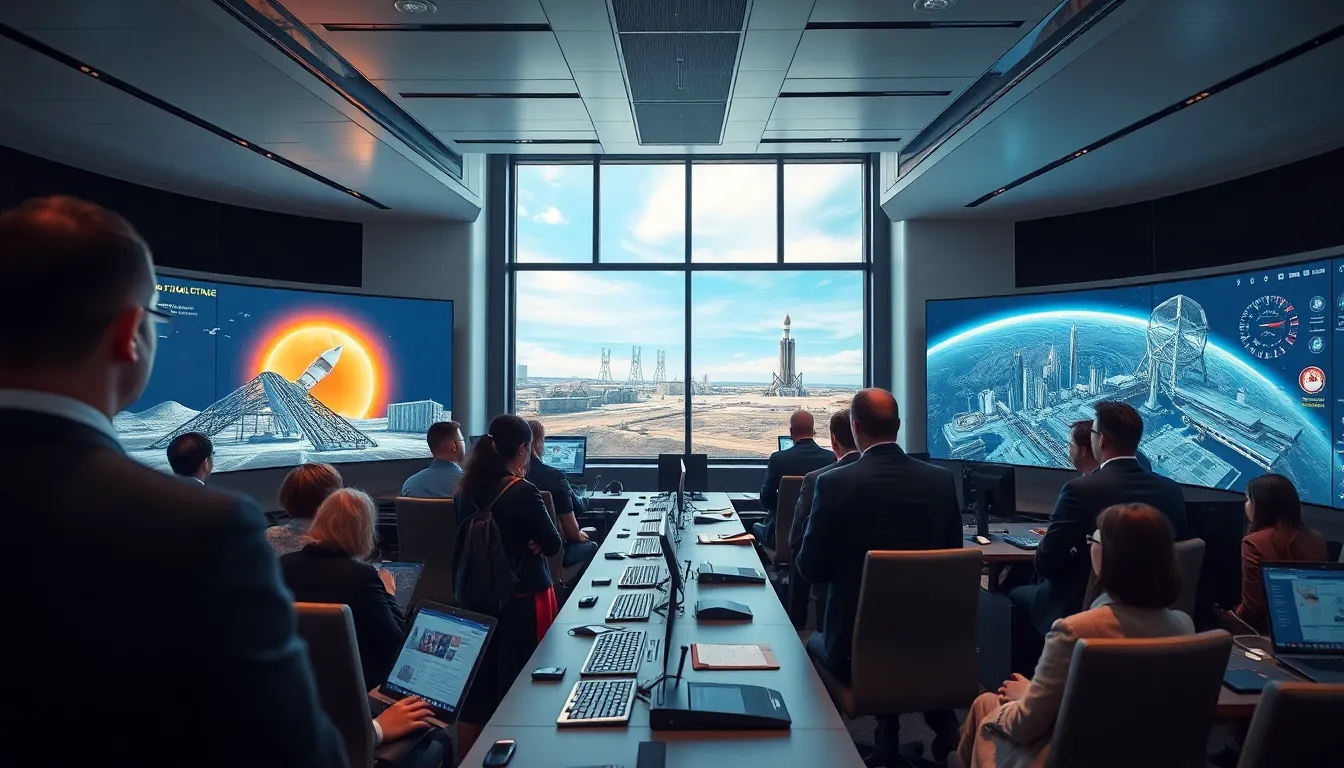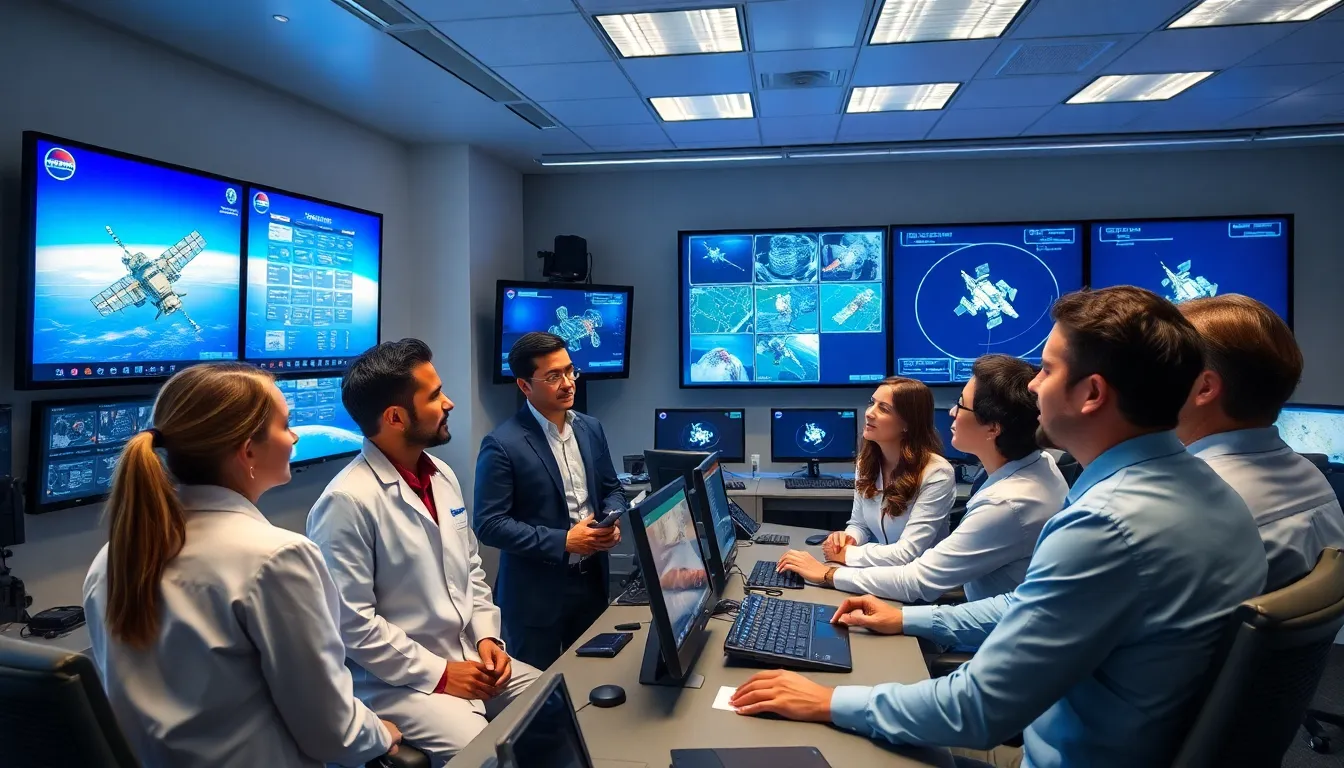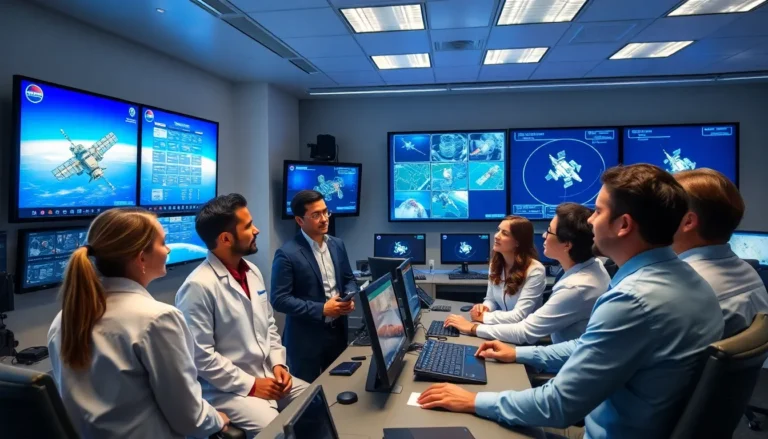When most people hear about space technology, they might picture astronauts in bulky suits floating among the stars or satellites zipping around the Earth. But there’s way more happening in the vastness of space than just the occasional moonwalk or satellite selfie. In a world where phones can track our every move, space technology plays a crucial role behind the scenes, influencing everything from daily navigation to weather predictions. So, buckle up as we investigate into the fascinating evolution, components, applications, and future of space technology.
Table of Contents
ToggleThe Evolution of Space Technology

Space technology has come a long way since the days of simple rocketry. It all started in the early 20th century when pioneers like Robert Goddard and Konstantin Tsiolkovsky laid the groundwork for modern space travel. Goddard’s invention of the liquid-fueled rocket in 1926 marked the beginning of serious experimentation. Fast forward to 1957, when the Soviet Union launched Sputnik, the first artificial satellite. This event not only sparked the space race but also birthed an age of technological marvels that would unfold over decades.
Throughout the 1960s, NASA propelled human space exploration into the limelight with the Apollo missions, culminating in the iconic 1969 Moon landing. Suddenly, the concept of humans walking on another celestial body didn’t seem so far-fetched. This era demonstrated the importance of collaboration among scientists, engineers, and political leaders to push boundaries. Since then, advances in materials science, computer technology, and telecommunications have revolutionized what’s possible in space.
In the last two decades, a new player has emerged: private companies. Firms like SpaceX, Blue Origin, and Virgin Galactic are propelling innovation at a breathtaking pace, making space travel more accessible, lowering costs, and inspiring a new generation of space enthusiasts. The evolution of space technology reflects humanity’s unwavering curiosity and resilience, always striving to reach for the stars.
Key Components of Space Technology
At its core, space technology is a blend of various disciplines. Understanding this blend requires peeling back the layers. Several key components combine to create this intricate tapestry of knowledge and engineering.
Satellites: These unmanned marvels orbit the Earth and other celestial bodies. They enable telecommunication, weather forecasting, navigation, and even Earth monitoring. With thousands of satellites currently in orbit, they are the backbone of modern connectivity.
Launch Vehicles: The rockets used to send payloads into orbit, launch vehicles are meticulously engineered machines. Each vehicle is a puzzle of complex components working together seamlessly. SpaceX’s Falcon 9, for example, showcases reusable technology that cuts costs and boosts efficiency.
Spacecraft: Designed for human or robotic missions, spacecraft are equipped with life support systems, navigational tools, and advanced sensors. The International Space Station (ISS) represents one of the most significant achievements in human spaceflight, serving as a microcosm for life beyond Earth.
Ground Control Systems: The unsung heroes of space technology, ground control teams manage missions from Earth. They monitor spacecraft, gather data, and communicate, ensuring everything runs smoothly.
In essence, these components work in harmony, pushing the boundaries of what’s achievable in space. Each plays a vital role, and together, they form the infrastructure that supports space exploration.
Applications of Space Technology
The applications of space technology are truly vast and varied, touching almost every aspect of life on Earth. Though many may not realize it, space tech plays a pivotal role in the reasons behind everyday conveniences.
Communication: Without satellites, modern communication would be unrecognizable. They enable everything from satellite television to broadband internet and global communications. They literally keep us connected, no matter where we go.
Weather Forecasting: It’s often taken for granted, but accurate weather forecasting relies heavily on satellite data. Weather satellites monitor atmospheric conditions, enabling meteorologists to predict storms and climate changes effectively.
Navigation Systems: Global Positioning System (GPS) technology, rooted in space technology, has revolutionized personal and commercial navigation. From finding the quickest route to enabling precise positioning for agricultural and military applications, it’s an integral tool in our daily lives.
Earth Observation: Satellites provide valuable data for monitoring environmental changes, natural disasters, and wildlife habitats. This information supports disaster management and helps conserve our planet.
These applications showcase the might of space technology, benefiting society and advancing human understanding of the universe.
Challenges in Space Technology Development
Even though the many successes of space technology, challenges abound. Developing this technology often feels like attempting to build a sandcastle at low tide with waves crashing in, every advancement can be undermined by unforeseen obstacles.
Funding: The costs associated with space missions and technology development are staggering, often demanding government and private sector investment. Securing adequate funding remains a continual challenge, particularly during economic downturns.
Safety: Safety is paramount in space endeavors. Ensuring the well-being of astronauts and the integrity of equipment poses constant challenges. Each mission must meticulously adhere to strict safety protocols to prevent disasters.
Debris Management: With thousands of pieces of debris cluttering Earth’s orbits, the risk of collisions increases. Managing this debris is critical for maintaining the safety of operational satellites and crewed missions.
Technological Advancements: As technology evolves rapidly, keeping pace with these advancements while also ensuring reliability adds another layer of complexity. Designing systems that can withstand the harsh conditions of space while harnessing cutting-edge technology is an ongoing try.
Navigating these challenges is essential for the continued progress of space technology. They remind everyone involved that success doesn’t come without its hurdles.
The Future of Space Technology
As humanity looks toward the stars, the future of space technology appears boundless. Several exciting developments are on the horizon, promising to reshape our understanding of space and our place within it.
Commercial Space Travel: Companies like SpaceX and Blue Origin are paving the way for commercial space tourism. Soon, paying passengers could experience life beyond Earth without the need for NASA training. This transformation represents an unprecedented opportunity for individuals to partake in space exploration.
Mars Colonization: The dream of colonizing Mars is no longer just science fiction. Technologies aimed at sustaining life on the Red Planet are developed and tested. With missions planned for the next few decades, the potential for human presence on Mars could transform our understanding of life beyond Earth.
Sustainable Exploration: The focus is shifting toward sustainable practices in space exploration. Research into utilizing resources on other celestial bodies, such as water on the Moon, aims to reduce dependency on Earth-based supplies.
Advanced Propulsion Systems: Innovations in propulsion technology hold the promise of quicker space travel. Concepts like ion propulsion and even theoretical warp drives could revolutionize how we traverse the cosmos, shrinking the timeline of interstellar travel.
These developments are thrilling reminders that when it comes to space technology, the sky is just the beginning.




